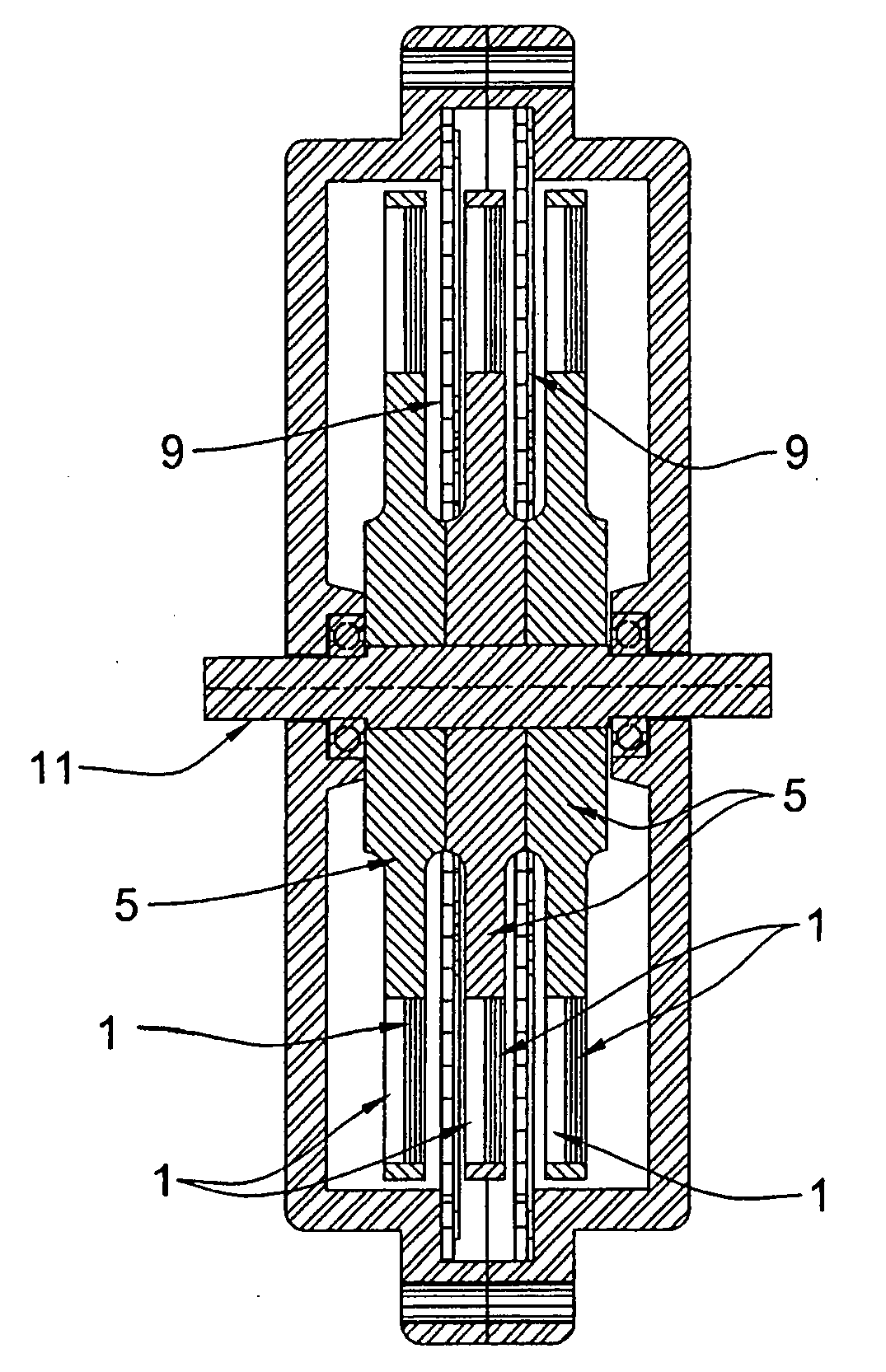Disk alternator
a technology of alternators and disks, which is applied in the direction of dynamo-electric machines, electrical apparatus, magnetic circuits, etc., can solve the problems of increasing the weight of the generator, the loss of the generator, and the resistance force of the rotor rotation, etc., and achieves the effects of low cost, low cost and low cos
- Summary
- Abstract
- Description
- Claims
- Application Information
AI Technical Summary
Benefits of technology
Problems solved by technology
Method used
Image
Examples
Embodiment Construction
[0048] The present invention will be described more fully hereinafter with reference to the accompanying drawings, FIGS. 1 to 9, in which like numerals refer to like elements throughout.
[0049] A disk alternator according to the present invention is an axial-gap rotary electric generator comprising rotor and stator means designed to be direct driven, thus eliminating the need for costly gearboxes.
[0050] The rotor means comprises at least two rotating disks (i.e. disk rotors or rotor disks), each disk with a circular array of magnets arranged along the outer periphery in side-by-side relationship in a like polarity configuration. That is to say, the magnets of one disk are arranged side-by-side in a circular fashion with north (N) poles of the magnets disposed along the periphery of one surface of the rotor disk and south poles of the magnets disposed along the periphery of the opposite surface of the rotor disk. The disk rotors are “stacked” (i.e., arranged one over the other) keep...
PUM
 Login to View More
Login to View More Abstract
Description
Claims
Application Information
 Login to View More
Login to View More - R&D
- Intellectual Property
- Life Sciences
- Materials
- Tech Scout
- Unparalleled Data Quality
- Higher Quality Content
- 60% Fewer Hallucinations
Browse by: Latest US Patents, China's latest patents, Technical Efficacy Thesaurus, Application Domain, Technology Topic, Popular Technical Reports.
© 2025 PatSnap. All rights reserved.Legal|Privacy policy|Modern Slavery Act Transparency Statement|Sitemap|About US| Contact US: help@patsnap.com



